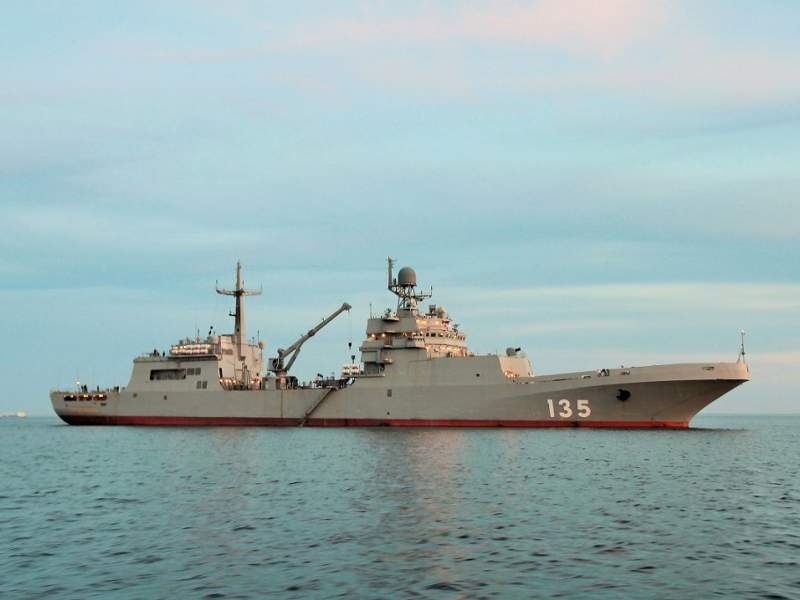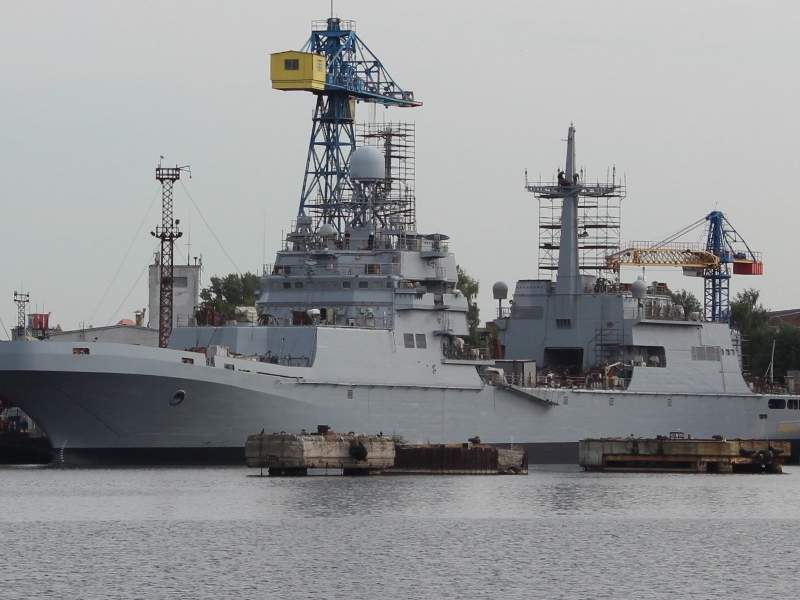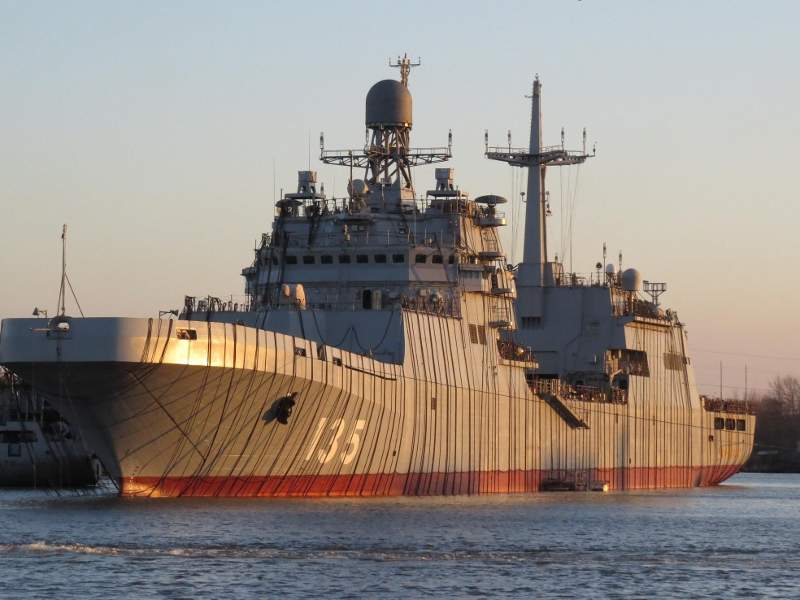The Project 11711 Ivan Gren-class landing ships are being built by Yantar shipyard, a part of United Shipbuilding Corporation, for the Russian Navy. The Ivan Gren-class is the successor of the Project 775 Ropucha-class landing ships in service with the navy since 1975.
The keel for the first vessel in class, Ivan Gren (135), was laid at Yantar shipyard in Kaliningrad in December 2004. Construction of the hull form was completed by the end of November 2010, and the vessel was launched in May 2012.
The vessel began builder trails in mid-2016, and the helicopter complex on board the ship was successfully tested in August 2016. The sea trials were put on hold in October 2016 due to the malfunctioning of the degaussing system. The trails will resume in early 2017, and the ship is anticipated to be delivered to the Black Sea Fleet of the Russian Navy in 2017.
The Russian Navy placed an order for the second Ivan Gren-class landing ship, Petr Morgunov, in October 2014. The keel for the vessel was laid in June 2015, and the ship is scheduled to be delivered to the Russian Navy in 2018.
Ivan Gren-class design and technical specifications
The Project 11711-class incorporates a mono-hull design developed by JSC Nevskoye Design Bureau. The vessels are intended for the transportation of military cargo and equipment, as well as landing troops.
Ivan Gren has a length of 120m, beam of 16.5m, hull height of 11m and draft of 3.8m at a full load displacement of 6,600t. The ship can complement a crew of 100.
Cargo and helicopter handling capacities
The large landing ship will have the capacity to transport 300 troops, up to 13 main battle tanks or a maximum of 20 medium vehicles such as armoured personnel carriers and fighting vehicles, or up to 30 trucks.
The vessel can support the operation of a single Kamov Ka-29 (NATO reporting name: Helix-B) military transport helicopter from the landing spot at the stern of the hull. The landing pad is integrated with optical facilities for allowing the take-off and landing of a helicopter weighing up to 12t. The ship will also provide a hangar facility for embarked rotorcraft.
Weapon systems on board Ivan Gren
Ivan Gren is armed with Igla (SA-N-10 Grouse) man-portable surface-to-air missile (SAM) system, multiple artillery rocket systems, 76mm AK-176 naval gun and 30mm AK-630M-2 close-in weapon system (CIWS).
The AK-630M-2 CIWS is installed with two 30mm six-barrelled GSh-6-30 rotary cannons with a rate of fire of 10,000 rounds a minute. The weapon system can engage targets within the range of 4,000m.
Sensors and countermeasures
The sensors and countermeasures package aboard the vessel will include MR-352 Pozitiv air/surface search radar, a navigation radar, an electro-optical close-range air/surface situational awareness system and a decoy launching system.
Ivan Gren propulsion
The landing ship is powered by two DRRA-3700 diesel engines driving two fixed-pitch propellers. Each engine develops a power output of 3,700kW. The vessel also integrates a PU100FM thruster and two ADG-1000NK diesel-generators.
The propulsion system will provide a maximum speed of 18k and range of 3,500nmi at an economic speed of 16k. The vessel will have a maximum endurance of 30 days.










